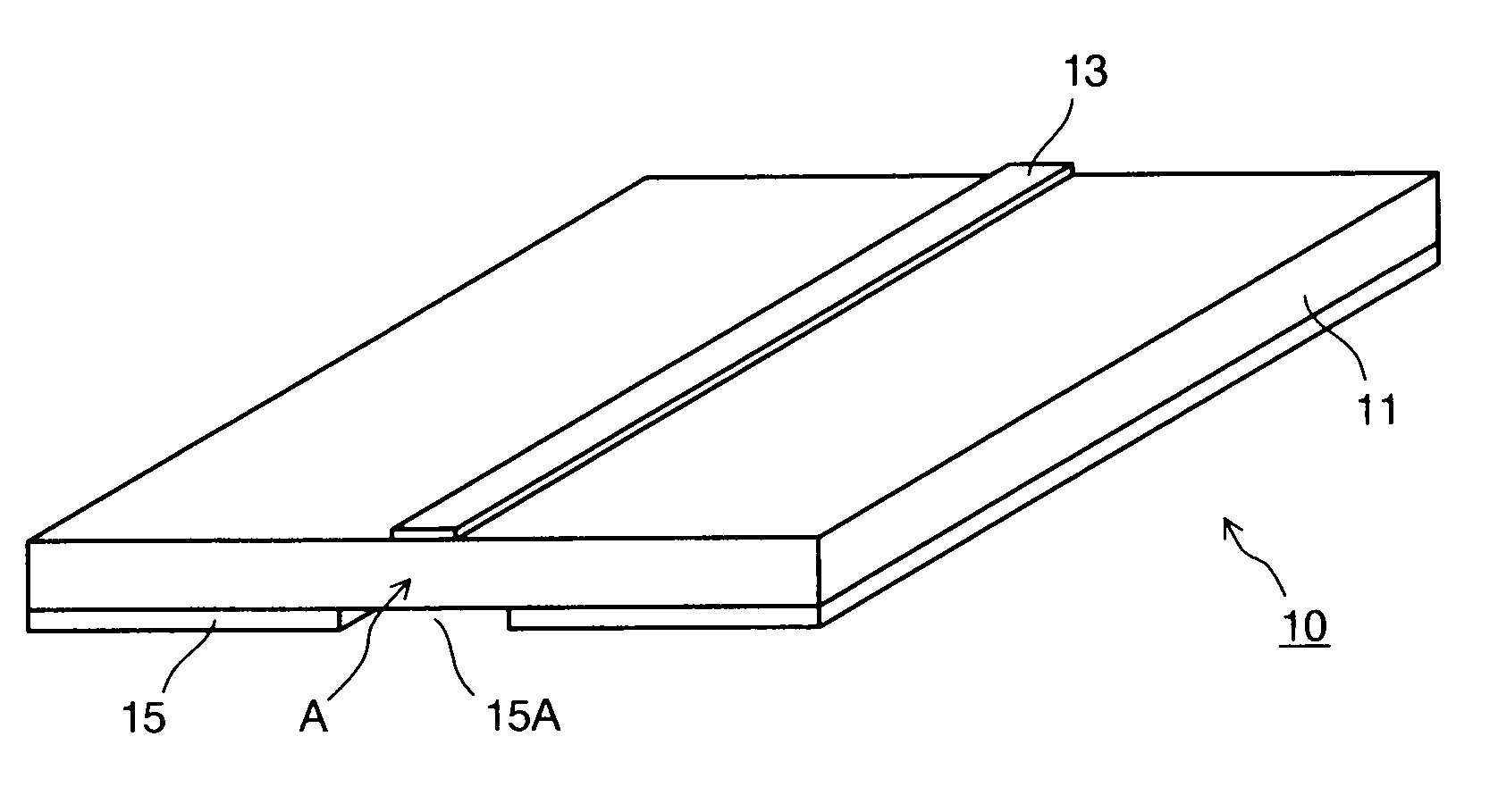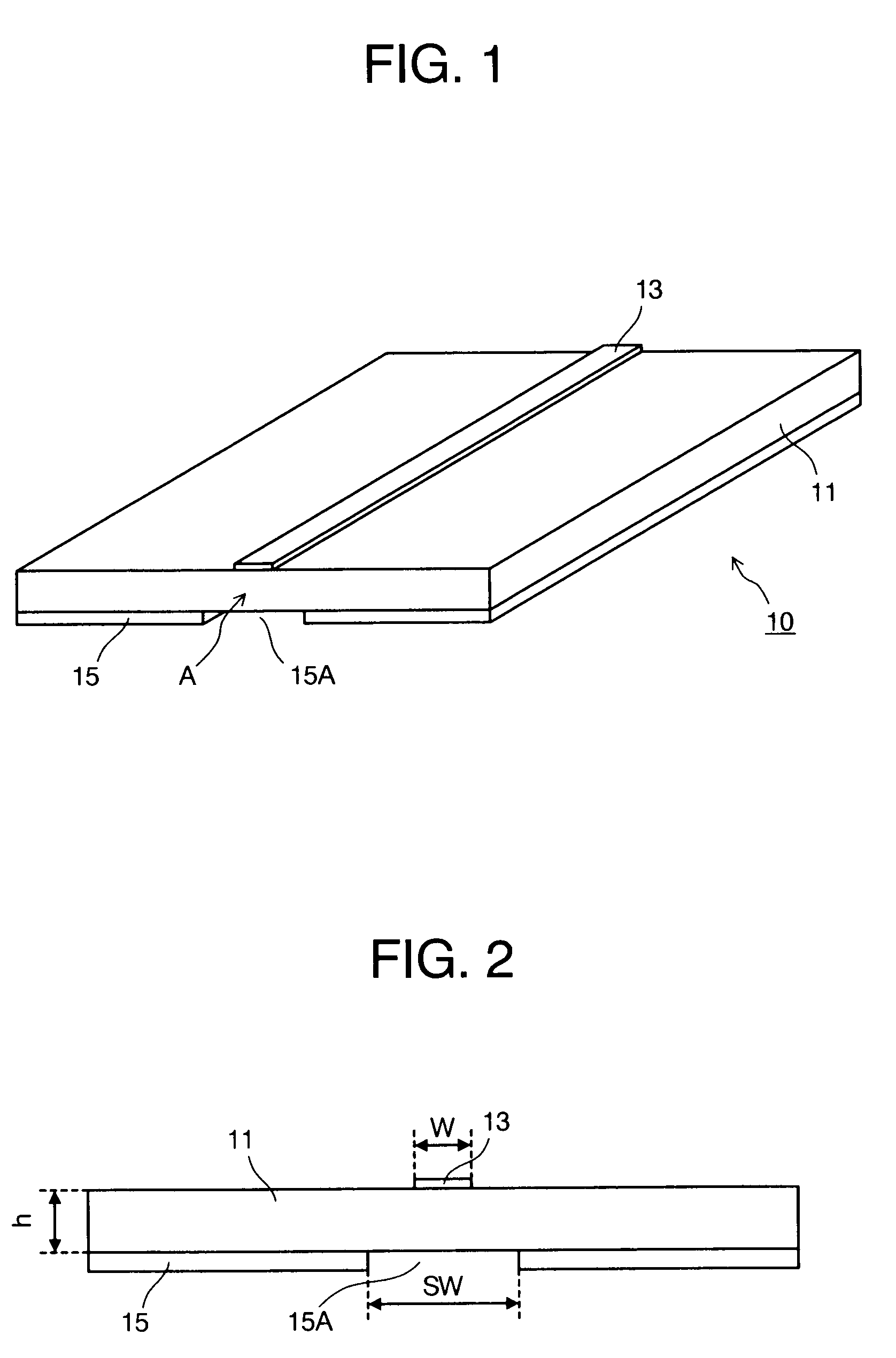Printed wiring board
a wiring board and printed technology, applied in the direction of waveguides, waveguide type devices, high frequency circuit adaptations, etc., can solve the problems of wasting electric power, difficult to design the characteristic impedance of flexible wiring boards, and affecting the operation of flexible wiring boards
- Summary
- Abstract
- Description
- Claims
- Application Information
AI Technical Summary
Benefits of technology
Problems solved by technology
Method used
Image
Examples
Embodiment Construction
[0028]Hereinafter, the present invention will be described in detail with reference to the drawings. FIG. 1 is a perspective view illustrating an embodiment of the printed-wiring board according to the present invention. FIG. 2 is a side view of the printed-wiring board in FIG. 1, as viewed from the direction designated by the arrow “A”.
[0029]The printed-wiring board 10 illustrated in FIG. 1 includes aboard 11 made of insulator, a metallic conductor (wiring pattern) 13 to transfer (a) microwave electric signal(s) which is formed on the main surface of the board 11 and an electric power layer 15 formed on the rear surface of the board 11, thereby constituting a double-sided printed wiring board with a double-sided wiring structure. The electric power layer 15 is maintained a standard electric potential or shifted slightly from the standard electric potential so that the potential shift from the standard electric potential can be small enough to set the characteristic impedance of the...
PUM
| Property | Measurement | Unit |
|---|---|---|
| thickness | aaaaa | aaaaa |
| thickness | aaaaa | aaaaa |
| thickness | aaaaa | aaaaa |
Abstract
Description
Claims
Application Information
 Login to View More
Login to View More - R&D
- Intellectual Property
- Life Sciences
- Materials
- Tech Scout
- Unparalleled Data Quality
- Higher Quality Content
- 60% Fewer Hallucinations
Browse by: Latest US Patents, China's latest patents, Technical Efficacy Thesaurus, Application Domain, Technology Topic, Popular Technical Reports.
© 2025 PatSnap. All rights reserved.Legal|Privacy policy|Modern Slavery Act Transparency Statement|Sitemap|About US| Contact US: help@patsnap.com



